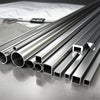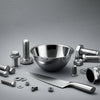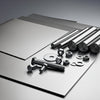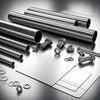Austenitic Stainless Steel: 9 Essential Points For Selection
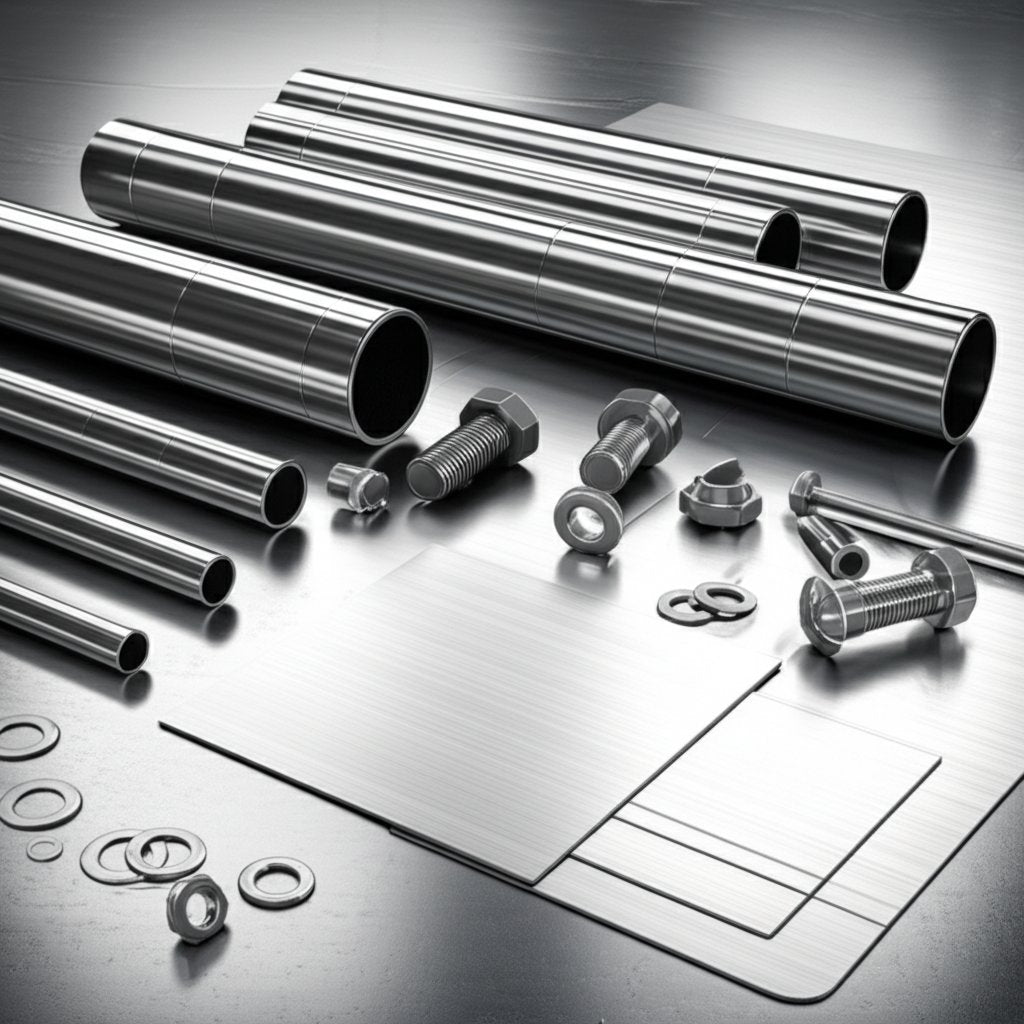
Austenitic Stainless Steel Fundamentals
When you hear the term "stainless steel," what comes to mind? Maybe the utensils in your kitchen drawer, the gleaming tanks at a food processing facility, or the robust pipes in a chemical plant. But not all stainless steels are created equal. To truly understand why austenitic stainless steel is so widely used, it's essential to start with the basics—what sets steel apart from stainless steel, and what makes the austenitic family unique?
What is austenitic stainless steel?
At its core, steel is an alloy of iron and carbon. When you add enough chromium—typically above 10.5%—you get stainless steel, which forms a protective chromium oxide layer that resists rust and corrosion. But within the world of stainless steels, austenitic stainless steel stands out as the most versatile and widely produced family, dominating the 300 series stainless steel grades. What makes this group so special? The answer lies in its internal structure and the careful balance of alloying elements.
- Crystal Structure: Face-centered cubic (FCC) austenite, which is stable from cryogenic temperatures up to high heat.
- Typical Alloying Elements: Chromium (for corrosion resistance), nickel (to stabilize austenite and enhance ductility), plus optional molybdenum or nitrogen for added corrosion performance.
- Corrosion Behavior: Excellent general corrosion resistance, especially to many acids and chlorides, thanks to the passive oxide layer formed by chromium.
- Weldability: Outstanding weldability and formability—these steels can be shaped into everything from thin sheet metal to complex tubing and intricate fasteners.
- Formability: High ductility and toughness, making them easy to bend, draw, or deep-form without cracking.
Austenite crystal structure explained
Sounds complex? Imagine the atoms in steel arranged in a grid. In austenitic stainless steel, the atoms line up in a face-centered cubic (FCC) pattern—this is called the austenite structure. This structure is stabilized by nickel and sometimes by nitrogen, allowing the steel to remain tough and ductile even at very low or high temperatures. The FCC structure is also why these steels can be stretched or formed into demanding shapes for applications like food processing equipment, process piping, and fasteners without becoming brittle [ScienceDirect].
Why some stainless steels are non magnetic
Ever wondered why a refrigerator magnet doesn't stick to your stainless steel sink or why some stainless fasteners are magnetic while others aren't? The answer again comes back to structure. Austenitic stainless steels are generally considered non magnetic stainless steel because their FCC crystal structure doesn't allow for magnetism, unlike ferritic or martensitic grades. However, after certain fabrication processes like cold working (bending, drawing, or rolling), small amounts of martensite—a magnetic phase—can form, causing a slight magnetic response. This is normal and does not indicate a loss of corrosion resistance, but it's something to be aware of if magnetism matters in your application.
Key takeaway: Austenitic stainless steels (like those in the 300 series) are prized for their excellent corrosion resistance, ductility, and ease of fabrication—thanks to their austenite crystal structure and balanced chemistry. Unlike ferritic or martensitic stainless steels, they are typically non magnetic stainless steel, which is a major benefit in many applications.
In daily life, you’ll find austenitic steel in everything from kitchen equipment and medical devices to architectural cladding and chemical process plants. The combination of chromium and nickel is what makes austenitic stainless so adaptable, while optional additions like molybdenum and nitrogen further boost corrosion resistance for harsh environments.
As you move through this guide, you’ll see how the unique structure and chemistry of austenitic stainless steel influence its grade selection, mechanical properties, corrosion performance, and fabrication best practices. Next, we’ll dive deeper into how specific alloying elements and grade choices shape the capabilities of these essential materials.

Composition And Grade Equivalency Essentials
How composition shapes austenitic performance
When you’re selecting a stainless steel for your next project, the alphabet soup of numbers and letters—304, 316, 321, 310, 201—can feel overwhelming. Why do these austenitic steel grades matter, and how does their chemistry actually impact performance? The answer lies in the careful blend of elements that define their corrosion resistance, strength, weldability, and suitability for specific environments.
- Chromium (Cr): The backbone of stainless steel composition, chromium forms a passive oxide layer that protects against rust and many chemicals.
- Nickel (Ni): Stabilizes the austenite structure, boosting ductility, toughness, and corrosion resistance—especially at lower temperatures.
- Molybdenum (Mo): Enhances resistance to localized corrosion (like pitting and crevice attack), particularly in chloride-rich or acidic environments.
- Nitrogen (N): Acts as a powerful austenite stabilizer and increases mechanical strength, often used in 200 series stainless steel as a nickel substitute.
- Carbon (C): Usually kept low to improve weldability and prevent sensitization (grain boundary carbide precipitation), which can reduce corrosion resistance.
- Manganese (Mn): Used to partially replace nickel in 200 series grades, helping stabilize austenite and lower costs, but with some tradeoffs in corrosion resistance.
Understanding 304, 316, 321, and 310 naming
Let’s break down the most common austenitic stainless steel grades you’ll encounter:
| Grade | Typical Applications | Stabilization Approach | Corrosion/Temperature Notes |
|---|---|---|---|
| 304 (18/8, A2) | Food equipment, sinks, tanks, fasteners | None; standard grade | Excellent general corrosion resistance; not ideal for high-chloride or high-temp |
| 304L | Welded structures, piping, tanks | Low-carbon variant | Reduces sensitization risk during welding; slightly lower strength |
| 316 (A4) | Marine, chemical, pharmaceutical, medical | None; Mo added | Superior resistance to pitting/crevice corrosion (chlorides, acids) |
| 316L | Welded marine/chemical equipment | Low-carbon variant | Best for welded assemblies in corrosive settings |
| 316Ti/321 | Heat exchangers, exhaust, high-temp piping | Stabilized (Ti or Nb) | Resists sensitization at elevated temperatures; suited for long-term heat exposure |
| 310 | Furnace parts, kilns, high-temp fixtures | None; high Cr/Ni | Outstanding strength and oxidation resistance at very high temperatures |
| 200 Series (e.g., 201, 202) | Low-cost hardware, hose clamps, rebar | Mn/N replaces some Ni | Higher strength, lower corrosion resistance than 300 series; not for food contact |
| 303 | Machined parts, fittings, fasteners | None; S added | Free-machining; lower corrosion resistance than 304 |
For example, 303 stainless steel vs 304 comes down to machinability—303 has added sulfur for easier cutting, but this slightly reduces its corrosion resistance compared to 304.
200 series vs 300 series tradeoffs
Imagine you’re balancing cost and performance. 300 series stainless (like 304 and 316) uses nickel to stabilize austenite, delivering the best all-around corrosion resistance and weldability. The 200 series stainless steel family swaps some nickel for manganese and nitrogen, which can lower costs and increase mechanical strength. However, this tradeoff often means reduced corrosion resistance, especially in aggressive or food-contact environments, and sometimes more challenging weldability [Nickel Institute].
Takeaway: 200 series grades can be a fit for low-demand or cost-sensitive uses, but for critical applications—especially those involving food, chemicals, or marine exposure—300 series austenitic stainless steels remain the gold standard in both performance and global acceptance.
Procurement and design tips for grade selection
- Choose "L" grades (like 304L, 316L) when welding is involved to minimize the risk of sensitization and intergranular corrosion.
- Opt for stabilized grades (e.g., 321, 316Ti) for components exposed to prolonged high temperatures.
- Always specify grade equivalents when sourcing internationally—naming conventions can differ, and clarity avoids costly mistakes.
By understanding the subtle but crucial differences among austenitic stainless steel grades, you’ll be equipped to match your application’s needs to the right material, whether you’re focused on corrosion resistance, strength, weldability, or cost. Up next, we’ll explore how these compositions translate into real-world mechanical properties and what that means for your design and fabrication strategies.
How Austenitic Stainless Steel Responds to Real-World Demands
When you design with austenitic stainless steel, you might wonder: How does this material really perform when bent, stretched, chilled, or heated? The answer lies in the unique blend of stainless steel material properties shaped by its crystal structure, alloying elements, and how it’s processed. Let’s break down what you need to know to make confident choices for your next project.
Temperature Effects on Strength and Toughness
Imagine a tank that must withstand both arctic cold and summer heat, or a pipe exposed to furnace exhaust. The properties of stainless steel—especially in the austenitic family—are strongly influenced by temperature. At very low (cryogenic) temperatures, austenitic steels like 304 maintain high toughness and ductility, resisting brittle fracture far better than ferritic or martensitic types. This is why they’re often used in LNG storage and other cold-service applications [Outokumpu].
But what about high heat? As temperatures rise, tensile and yield strengths decrease, and prolonged exposure (especially above 425°C/800°F) can lead to microstructural changes that affect performance. For example, 309 stainless steel or stabilized grades like 321 and 310 are preferred for continuous service at elevated temperatures due to their enhanced creep and oxidation resistance. Always check the grade’s suitability for your operating range.
Cold Work and Work Hardening in Austenitic Grades
Ever noticed how some stainless steel parts become stiffer after bending or rolling? That’s work hardening in action—a signature trait of austenitic stainless steels. When you cold work these materials (by rolling, drawing, or forming), their strength and hardness increase, but ductility drops. This effect is much more pronounced than in ferritic or martensitic grades.
For example, cold-rolled 304 sheet will have higher yield and tensile strength, but also increased anisotropy—meaning its ss properties can vary depending on direction. This can affect forming and structural behavior, so designers should specify both grade and condition (annealed or cold-worked) and consider the final product’s orientation [CCFSS Library].
Form Factors That Change Properties
The crystal structure of 304 stainless steel—a face-centered cubic (FCC) lattice—makes it highly formable in the annealed state. But the form (sheet, plate, bar) and processing steps (cold rolling, temper rolling) can shift key mechanical properties. You’ll notice:
- Sheet/Coil (Annealed): Highest ductility, moderate strength, excellent for deep drawing or stamping.
- Sheet/Coil (Cold-Worked): Higher strength and hardness, lower ductility, more directional properties.
- Bar/Rod: Typically higher strength due to processing, but less formable than sheet.
- Plate: Balanced properties, often used for structural or pressure applications.
| Grade | Form | Yield Strength | Tensile Strength | Elongation | Notes on Cold Work |
|---|---|---|---|---|---|
| 304 | Sheet (Annealed) | Low | Medium | High | Work hardens rapidly; anisotropy increases with cold rolling |
| 304 | Sheet (Cold-Worked) | Medium ↑ | High ↑ | Medium ↓ | Strength increases, ductility decreases |
| 316 | Plate | Low-Medium | Medium | High | Similar trends to 304, with better corrosion resistance |
| 309 | Bar | Medium | High | Medium | Used for higher temperature strength |
Key insight: Austenitic stainless steels excel at low temperatures, maintaining toughness and ductility, but their high-temperature strength depends on grade selection and stabilization. Always match the grade to your service environment.
Practical Tips for Designers and Fabricators
- Specify both grade (e.g., 304, 316, 309 stainless steel) and condition (annealed, cold-worked) for accurate design and procurement.
- Consider anisotropy in cold-rolled sheet—mechanical properties may differ along and across the rolling direction.
- Remember: Minor magnetism can develop in non magnetic ss after heavy cold work due to the formation of martensite. This is normal and does not usually impact corrosion performance.
Understanding the interplay between composition, processing, and service conditions is key to leveraging the full potential of austenitic stainless steel. Up next, we’ll explore how these mechanical traits interact with corrosion metrics, so you can confidently select the right grade for your environment and application.

Corrosion Metrics PREN And Real World Meaning
PREN and What It Implies for Chloride Resistance
When you’re choosing austenitic stainless steel for environments exposed to water, salt, or chemicals, you might ask: How do I know which grade will last the longest? The answer often starts with understanding PREN—the Pitting Resistance Equivalent Number. Think of PREN as a quick way to compare how well different grades resist localized corrosion, especially pitting, which can silently eat through metal beneath the surface.
PREN is calculated using the formula PREN = %Cr + 3.3 × %Mo + 16 × %N. Here, chromium (Cr), molybdenum (Mo), and nitrogen (N) are the main players—higher amounts of each typically mean better resistance to pitting, especially in chloride-rich environments like seawater or cleaning chemicals. However, PREN should only be used to compare grades within the same stainless steel family and isn’t a guarantee of real-world performance.
| Grade | Indicative PREN Band | Typical Service Environment | Notes |
|---|---|---|---|
| 304 (18/8) | ~18–20 | Indoor, low-chloride, food & beverage | Standard resistance; not ideal for marine or aggressive chemical use |
| 316 (18/10) | ~23–25 | Marine, chemical, industrial washdown | Improved pitting resistance due to Mo; preferred for chlorides |
| Super Austenitic (e.g., 254SMO) | ≥ 40 | Seawater, pulp & paper, desalination | Exceptional resistance; often used where 316 fails |
Remember, the difference between 304 and 316 stainless steel is largely about the addition of molybdenum in 316, which boosts its PREN, making it much better suited for chloride-rich environments.
Pitting Potential and Crevice Risk Factors
Sounds technical? Imagine tiny pinholes forming under a droplet of salty water on a tank wall—that’s pitting. Crevice corrosion is similar but happens in shielded spots, like under gaskets or deposits, where oxygen can’t reach. Lab tests, such as measuring the Critical Pitting Temperature (CPT), help rank alloys, but real-world conditions are messier—temperature swings, stagnant water, and poor cleaning can all accelerate attack [SSINA].
- High chloride content (saltwater, de-icing, cleaning chemicals)
- Elevated temperatures
- Low oxygen (stagnant water, shielded crevices)
- Poor drainage or water traps
- Tight crevices (gaskets, lap joints, deposits)
Design tip: Good drainage, smooth welds, and a high-quality surface finish are your best defenses against crevice corrosion in austenitic stainless steel.
Choosing Between 304 and 316 for Environments
So, is 316 stainless steel good for your application? If you’re dealing with chlorides—think coastal buildings, food processing with salty brines, or industrial washdown—316 is often the safer bet. Its higher PREN and added molybdenum mean it can withstand pitting and crevice attack that would quickly compromise 304. For truly aggressive settings, super austenitic stainless steel grades push resistance even further, but at a higher cost.
When comparing 18-8 vs 316 or 316 vs 18 8 stainless steel, remember: “18-8” is a nickname for 304, which contains roughly 18% chromium and 8% nickel, while 316 (sometimes called 18/10) adds molybdenum for extra defense. The jump in performance is especially noticeable in splash zones, marine fixtures, or where cleaning agents are used frequently.
Bringing PREN to Practical Selection
While PREN is a helpful screening tool, what makes stainless steel last in the field is a combination of alloy selection, surface finish, and smart design. Always consider the environment: Will there be salt spray, standing water, or tight crevices? Are you able to maintain a smooth, passivated surface? Even the best alloy can fail if design traps moisture or if welds are rough and uncleaned.
In summary, PREN gives you a head start on picking the right grade, but real-world durability depends on how you manage the environment and fabrication. As you move forward, keep in mind that fabrication and welding practices can further impact corrosion performance—so let’s explore those next.
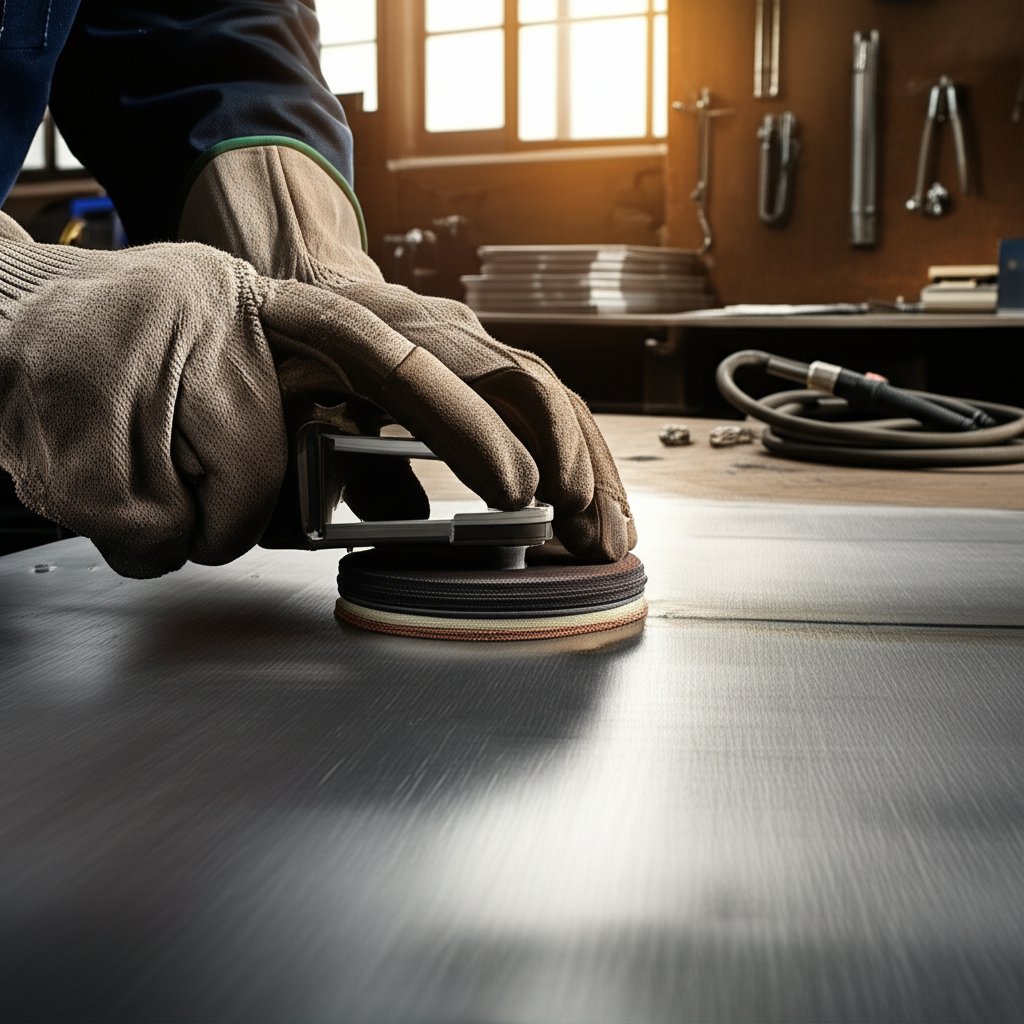
Fabrication And Welding Best Practices
When you’re fabricating or welding austenitic stainless steel, it’s easy to assume that its famous corrosion resistance will take care of itself. But have you ever noticed unexpected rust near welds, or wondered why a supposedly non magnetic stainless part suddenly attracts a magnet after fabrication? These surprises often trace back to the details of your welding and finishing process. Let’s break down the essentials to keep your cres steel (corrosion-resistant steel) projects performing at their best, from stainless steel sheet metal assemblies to heavy-duty piping and tanks.
Welding Do’s That Preserve Corrosion Resistance
- Preparation and Fit-Up: Start with clean, dry surfaces—remove oil, grease, and markings from all weld zones. Precise fit-up minimizes gaps and reduces the risk of weld defects.
- Heat Input and Interpass Control: Use controlled, low heat input to prevent excessive grain growth and minimize the risk of sensitization (chromium carbide precipitation at grain boundaries). For most austenitic grades, follow grade-appropriate WPS/PQR data and filler manufacturer guidance for interpass temperature limits.
- Filler Selection: Match or slightly overmatch the base metal in alloy content. For example, use 316L filler for 316 or 316ti stainless steel, and stabilized fillers (such as those containing titanium or niobium) for grades intended for high-temperature service or where sensitization is a concern.
- Back Purging for Piping: For piping and pressure vessels, use inert gas back purging (commonly argon) to protect the root side from oxidation and ensure a clean, corrosion-resistant weld bead.
- Weld Sequencing: Plan your weld sequence to minimize distortion and residual stresses, especially important in thin stainless steel sheet metal and complex assemblies.
- Post-Weld Cleaning and Passivation: Remove weld discoloration (heat tint) and surface oxides using mechanical (brushing, grinding) followed by chemical pickling or passivation. This step is crucial for restoring the full corrosion resistance of cres material and should be performed on both the outside and inside weld faces [BSSA].
- Documentation: Record welding parameters, filler types, cleaning procedures, and inspection results to aid future traceability and quality assurance.
Picking the Right Filler for Austenitic Joints
Choosing the correct filler metal is more than matching numbers. For standard 304 and 316 grades, their "L" (low carbon) versions are preferred for welding to reduce carbide precipitation. When welding stabilized grades like 321 or 316ti stainless steel, use fillers with similar stabilizing elements (Ti or Nb) to prevent sensitization at elevated temperatures. If you’re unsure, always defer to the filler manufacturer’s recommendations and ensure compatibility with your base material and intended service environment.
Post-Weld Cleaning and Passivation Essentials
Ever seen rainbow colors or brownish tints near welds? That’s heat tint—a thickened oxide layer that signals a local chromium-depleted zone. Leaving this on the surface can undermine corrosion resistance, especially in drinking water or food-grade applications. The best practice is to mechanically remove visible discoloration, then perform acid pickling or passivation to restore the passive chromium oxide layer. This is even more important on the inside of pipes and tanks, where corrosion can start out of sight.
- Lack of inert gas purge on the root side
- Excessive heat input or slow travel speeds
- Contamination from shop dust, tools, or marking crayons
- Grinding burns or rough surface finishes
Even non magnetic stainless steel grades can develop slight magnetism after heavy cold work or welding due to the formation of martensite. This does not usually affect corrosion performance but is worth noting for inspection and design.
By following these best practices, you’ll maintain both the corrosion resistance and mechanical integrity expected of austenitic stainless steel. Whether you’re working with cres steel for demanding chemical environments or fabricating decorative architectural panels, attention to welding, cleaning, and finishing details is what truly separates a high-performance, long-lasting installation from one prone to early failure. Next, we’ll look at how to identify and prevent common failure modes in service—so your stainless projects stand the test of time.
Failure Modes And Prevention Actions
Ever wondered why some stainless steel installations last for decades, while others fail unexpectedly? The answer often lies in understanding the specific failure modes that can impact austenitic steels—and how smart design, fabrication, and maintenance work together to prevent them. Let’s break down the most common threats and practical ways to keep your assets resilient over the long haul.
Stress Corrosion Cracking Recognition and Control
Chloride stress corrosion cracking (SCC) is one of the most insidious threats facing austenitic stainless steel, especially in environments where chlorides and elevated temperatures are present. SCC often develops without warning, manifesting as branched, surface-level cracks that can rapidly propagate and cause leaks or catastrophic failure. It’s more likely to occur in the heat-affected zones (HAZ) of welds—areas where the microstructure has been sensitized and residual stresses are high.
- Risk Factors: High chloride content, elevated temperatures (often above 60°C/150°F for fully immersed service), residual tensile stress from welding or forming, and a sensitized microstructure.
- Prevention Tactics: Use low-carbon or stabilized grades (like 304L, 316L, 321), minimize residual stresses via careful fabrication, and specify post-weld heat treatment or thorough pickling/passivation per standards like ASTM A380 and A967.
- Inspection Cues: Look for surface cracks near welds, especially in hot, chloride-rich areas. Nondestructive testing (NDT) methods, such as dye penetrant or eddy current testing, can help spot early-stage cracks.
Pitting and Crevice Corrosion Hotspots
Pitting and crevice corrosion are localized attacks that can silently undermine the integrity of even the best stainless steel grade. Pitting often starts at sites where the protective passive film has been damaged—commonly in weld heat-affected zones or under deposits. Crevice corrosion is notorious in tight gaps, such as under gaskets or in lap joints, where oxygen can’t replenish the passive layer. Both can lead to rapid, through-wall penetration if left unchecked.
- Risk Factors: High chloride concentration, stagnant water, poor drainage, rough or heat-tinted welds, and tight crevices.
- Prevention Tactics: Select higher-alloyed grades (like 316 or super austenitic), maintain smooth, passivated surfaces, ensure good drainage, and minimize crevice geometry in design.
- Inspection Cues: Visual checks for discoloration, rust, or deposits near joints and welds; ultrasonic or eddy current testing for sub-surface pitting.
When Fatigue and Thermal Cycling Matter
Repeated loading, vibration, or temperature swings can induce fatigue cracks—especially at weld toes or notches. While austenitic steels generally offer good toughness, fatigue and stress-rupture failures can still occur in demanding conditions, such as high-temperature service or cyclically loaded structures.
- Risk Factors: Cyclic loading, poor weld profiles, sharp corners, high operating temperatures.
- Prevention Tactics: Use proper weld geometry, avoid sharp transitions, and specify grades with proven high-temperature strength (such as 321 or 310 for heat exposure).
- Inspection Cues: Monitor for surface cracks at weld toes, corners, or areas subject to vibration; consider periodic NDT for critical structures.
Other Failure Mechanisms: Galvanic Attack and Beyond
- Galvanic Corrosion: Occurs when dissimilar metals (e.g., stainless vs chrome or aluminum) are in contact in a wet environment. Prevent by using insulation or compatible fasteners.
- Intergranular Corrosion: Results from sensitization at grain boundaries (especially in the HAZ of welds). Prevent with low-carbon or stabilized grades and proper post-weld treatment.
- Hardened Stainless Steel Issues: Excessive cold work or welding can create martensite, increasing susceptibility to certain types of corrosion and, in rare cases, magnetism (highlighting the difference in austenitic vs ferritic behavior).
Diagnostic Summary: Failure Mechanisms, Risks, and Prevention
-
Stress Corrosion Cracking (SCC):
- High chlorides, heat, residual stress
- Use low-carbon/stabilized grades, minimize stress, inspect welds
-
Pitting Corrosion:
- Damaged passive layer, chlorides
- Pickling/passivation, select higher alloy grades, NDT for pits
-
Crevice Corrosion:
- Tight gaps, stagnant fluid, low oxygen
- Good design/drainage, smooth welds, routine inspection
-
Galvanic Corrosion:
- Dissimilar metals, moisture
- Insulate metals, use compatible fasteners
-
Fatigue/Stress-Rupture:
- Vibration, cyclic loads, high temp
- Proper welds, suitable grades, periodic inspection
Prioritize inspection of crevice-prone joints, weld heat-affected zones, and stagnant areas in your preventive maintenance program—these are the most likely sites for early corrosion and cracking to emerge.
Practical Prevention and Inspection Tips
- Use finishes and coatings that reduce crevice formation and facilitate cleaning.
- Ensure proper drainage and avoid water traps in design.
- Keep chloride levels and service temperatures within recommended limits for your chosen grade.
- Always record welding parameters and post-weld cleaning steps to trace issues if failures occur.
- Schedule regular NDT inspections—visual, ultrasonic, or eddy current—especially in critical or hard-to-reach areas.
By understanding these failure mechanisms and integrating prevention strategies into your design, fabrication, and maintenance routines, you’ll extend the life and reliability of your austenitic stainless steel assets. Next, we’ll explore how procurement choices and RFQ details can further support long-term performance and cost control.
Procurement Cost Drivers And RFQ Checklist
Top Cost Drivers for Austenitic Components
When you’re sourcing austenitic stainless steel—whether for structural stainless steel products, process piping, or architectural features—balancing technical requirements with budget constraints is a real challenge. Have you ever received a quote that seemed much higher than expected? The reason often lies in a handful of cost drivers that go well beyond just the base metal price. Let’s break them down so you can plan smarter and avoid surprises.
| Cost Driver | Typical Impact | Mitigation Strategies |
|---|---|---|
| Alloy Grade (e.g., 304, 316, 321) | High-grade alloys (like 316) cost 20-30% more than 304 due to alloying elements such as nickel and molybdenum. | Match grade to environment; avoid over-specifying. Use 304 for general use, 316 for high-chloride or marine. |
| Product Form (sheet, plate, bar, tube) | Complex forms (e.g., custom tubes or heavy plate) require more processing and may have higher scrap rates. | Design for standard forms and sizes where possible to leverage mass production efficiency. |
| Size & Thickness | Thin sheets (1-3mm) can cost ~20% more per square meter to process than thick plate due to deformation risk and slower cutting speeds. | Optimize design for manufacturability; avoid unnecessary thinning or oversized blanks. |
| Machining/Forming Complexity | Intricate shapes can add 35% or more to processing costs due to programming, tool wear, and extra handling. | Simplify geometry, use standard radii, and collaborate with fabricators early. |
| Surface Finish | Polishing, passivation, or powder coating can add significant cost, especially for architectural or food-grade finishes. | Specify only the finish needed for function and durability; avoid over-finishing hidden surfaces. |
| Order Quantity | Smaller orders have higher per-unit costs due to setup, minimum buys, and less bulk purchasing leverage. | Consolidate orders or standardize designs to increase batch size and negotiate better terms. |
| Alloy Surcharges & Market Volatility | Nickel and molybdenum price swings can add 10-20% to total cost during market spikes. | Monitor market trends, lock in prices with annual contracts, and time purchases strategically. |
| Welding/Post-Finish Steps | Welding, cleaning, and passivation can outweigh raw material costs for complex assemblies. | Optimize joint design, minimize welds, and specify cleaning only where critical. |
How Yield and Processing Affect Price
Sounds complex? Imagine you’re ordering 300 series cres sheet for a set of custom enclosures. If your design requires non-standard dimensions, you’ll pay not just for the extra material, but also for the increased scrap and handling. Processing costs—like CNC machining, forming, and surface treatments—can sometimes be higher than the raw material itself, especially for intricate or labor-intensive parts. Even transportation and management costs can add 30–50% to the base price, depending on order size and logistics.
Yield matters too: the more you can nest parts and minimize offcuts, the lower your effective cost per unit. Standardizing part designs and tolerances, and choosing finishes that are functional rather than decorative, can also help keep costs in check. For high-volume or repeat orders, negotiating with suppliers for bulk discounts or long-term pricing can make a significant difference.
RFQ Checklist for Accurate Stainless Quotes
Ready to request a quote? A clear, detailed RFQ (Request for Quotation) is your best tool for avoiding back-and-forth, delays, and costly misunderstandings. Here’s a step-by-step checklist to help you get it right the first time:
- Grade and Specification: Clearly state the stainless grades required (e.g., 304, 316, 321) and any relevant standards (ASTM, EN, JIS). If you’re specifying stainless steel cres or 300 series cres, include these terms for clarity.
- Product Form and Dimensions: Specify sheet, plate, bar, tube, or other structural stainless steel products with exact sizes and thicknesses.
- Tolerances: Define critical tolerances for dimensions, flatness, and straightness. Check that these align with both your design needs and manufacturing capabilities.
- Surface Finish: Indicate the required finish (e.g., 2B, BA, polished, passivated), and clarify if it’s for appearance, hygiene, or corrosion resistance.
- Heat Treatment/Condition: Note if annealed, cold-worked, or specific tempers are needed.
- Welding Requirements: List any welding, joint design, or post-weld cleaning/passivation steps expected.
- Inspection/Tests: Request specific inspections (visual, NDT, mechanical testing) and acceptance criteria.
- Documentation/Certs: Ask for mill test reports, certificates of compliance, and traceability documentation as required.
- Delivery Timing: Specify delivery windows, packaging, and any logistics or handling needs.
Requesting full documentation and clear traceability with your order—especially for critical or regulated applications—helps ensure that your stainless steel cres or structural stainless steel products meet all compliance and quality requirements.
By understanding the real cost drivers and preparing a precise RFQ, you’ll not only get more accurate quotes but also build stronger supplier relationships that support your project’s success. Next, we’ll turn our attention to standards, testing, and quality assurance—so you know exactly how to verify what you’re buying.
Standards Testing And Quality Assurance
When you specify austenitic stainless steel for a project, how can you be sure you’re really getting what you ordered? Imagine discovering late in fabrication that the wrong grade was delivered, or that a weld doesn’t meet performance expectations. That’s where robust testing and quality assurance come in. Let’s break down the essential steps and checks that ensure your material’s ss chemical composition, mechanical properties, and corrosion resistance truly match your requirements—and keep your project on track.
Essential Tests to Verify Grade and Properties
Sounds technical? It doesn’t have to be. Think of quality assurance as a toolkit: each test is a tool for confirming a specific aspect of your stainless steel. Here’s a practical table mapping common tests, their purposes, and when to use them, based on leading standards such as ASTM, ISO, and EN.
| Test Category | Purpose | When to Use | Standard Reference |
|---|---|---|---|
| Chemical Analysis (e.g., OES, XRF) | Verify composition of stainless steel and alloy grade | On receipt, PMI, material mix-ups | ASTM A240, A276, A312; ASTM Stainless Steel Standards |
| Tensile Testing | Check mechanical strength (yield, tensile, elongation) | Batch qualification, design validation | DIN EN ISO 6892-1; ASTM A240 |
| Impact Testing (Charpy) | Assess toughness, especially at low temperatures | Critical structures, cryogenic service | DIN EN ISO 148-1 |
| Hardness Testing (Brinell, Vickers, Rockwell) | Confirm resistance to indentation, correlate with strength | Incoming inspection, after heat/cold work | DIN EN 6506-1, 6507-1, 6508-1 |
| Intergranular Corrosion Testing | Detect sensitization and carbide precipitation | Welded joints, high-temp service | ASTM A262, DIN EN ISO 3651-2 |
| Pitting/Crevice Corrosion Testing | Evaluate localized corrosion resistance | Chloride-rich or aggressive environments | ASTM G48 |
| Passivation Verification | Ensure surface is properly passivated for corrosion resistance | After fabrication, before service | ASTM A967, A380 |
| Ferrite Content Measurement | Check weld integrity and microstructure | Welded assemblies, duplex grades | Magnetic-inductive method |
| Spectroscopic Material Identification | Positive Material Identification (PMI) for traceability | Critical components, compliance audits | Optical Emission Spectroscopy (OES), XRF |
| Dye Penetrant Testing | Reveal fine surface cracks/pores | Pressure vessels, welds | EN ISO 3452 |
| Ultrasonic Testing | Detect internal flaws or inclusions | Thick sections, welds, castings | EN ISO 17640 |
| Radiographic Testing | Visualize internal discontinuities | Critical welds, pressure boundaries | EN ISO 17636 |
For more on how these tests fit into ASTM and EN standards, see the comprehensive overview at Sannke: ASTM Stainless Steel Standards.
Corrosion and Passivation Verification That Matters
Ever wondered if your stainless part will really resist corrosion in the field? Tests like intergranular corrosion (Strauss or Huey), pitting/crevice (ASTM G48), and passivation checks (ASTM A967) are designed to simulate harsh service conditions. They help you confirm that the stainless composition and surface finish are up to the task—especially important for food, pharmaceutical, or marine applications. For instance, a passivation test can reveal if the protective chromium oxide layer is fully restored after welding or machining, a critical factor in long-term durability.
Nondestructive Examination for Weld Integrity
How do you catch hidden flaws before they become failures? Nondestructive examination (NDE) methods—like ultrasonic, radiographic, and dye penetrant testing—allow you to inspect welds, joints, and pressure boundaries without damaging the part. These tests are vital for safety-critical structures and help verify that fabrication meets both customer specs and international standards. For example, ultrasonic testing can detect subsurface cracks in thick plates, while dye penetrant testing highlights fine surface cracks invisible to the naked eye.
- Material certificates (showing stainless steel grades explained and compliance)
- Weld procedure qualification records (WPS/PQR)
- Inspection and test reports (mechanical, chemical, NDE)
- Surface finish records and passivation certifications
Test selection should always reflect actual service conditions and risk tolerance. Align your quality checks with where and how the material will be used—not just the minimum code requirements.
Implementation Tips: Consistency and Documentation
Want to avoid costly surprises? Ensure your drawing notes, purchase orders, and inspection plans all reference the same stainless steel material grades and relevant standards. Consistency here is key. Always request full documentation—certs, reports, and records—to trace the journey from mill to finished part. If you’re ever unsure about a test method or acceptance criteria, refer to the applicable ASTM or EN standard, or consult your lab or supplier for clarification.
By following these quality assurance steps, you’ll not only define stainless requirements for your application but also safeguard performance, compliance, and peace of mind. Next, let’s see how expert prototyping and manufacturability feedback can further de-risk your material choices before scaling up production.

Prototyping Pathways And Expert Support
From Grade Selection to Testable Prototypes
When you’re developing a new part or system, bridging the gap between material selection and manufacturability is critical—especially with austenitic stainless steel alloys. Have you ever wondered how to spot design risks before full-scale production? Or how to ensure your chosen stainless steel materials will perform under real-world conditions? That’s where rapid prototyping and expert DFM (Design for Manufacturability) feedback come into play, helping you move from grade selection to validated, testable prototypes without costly surprises.
- Define Environment and Loads: Identify the operating environment—temperature, chemicals, mechanical stresses—for your stainless 300 or other austenitic grade.
- Shortlist Grades: Choose suitable stainless steel austenitic grades based on corrosion, mechanical, and fabrication needs.
- Choose Prototype Process: Select the best fit: CNC machining for quick-turn metal parts (like 316 stainless tube or 3 4 stainless steel pipe), injection molding for polymer surrogates, or die casting for tooling trials.
- Specify Critical Tests: Plan for fit, function, and corrosion tests—especially if surface finish or passivation will impact the final application.
- Integrate DFM Feedback: Use expert reviews to optimize wall thickness, tolerances, and post-processing (e.g., passivation or polishing) for manufacturability and cost.
- Iterate Rapidly: Refine your design based on test results and DFM insights—repeat as needed to de-risk before scaling up.
DFM Insights That Cut Cost Without Cutting Quality
Imagine sending out a part for CNC machining, only to find out later that thin walls or sharp internal corners make it expensive or even impossible to manufacture. DFM feedback helps you catch these issues early. For example, wall thicknesses below recommended limits for stainless alloys may break during machining, while complex undercuts might require costly EDM processes. By collaborating with prototyping partners who provide real-time DFM input, you can update your design for smoother production and better yield—saving both time and money.
When to Prototype in Stainless Versus Aluminum
Not sure whether to prototype in stainless steel or aluminum? If you need to validate corrosion resistance, weldability, or final surface finish—especially for demanding environments—prototyping in your chosen austenitic stainless steel alloys is essential. For early-stage fit checks or cost-sensitive iterations, aluminum or polymer surrogates might suffice, but they won’t reveal issues like passivation response or the true performance of stainless steel austenitic grades.
| Prototyping Option | Best For | Pros | Cons |
|---|---|---|---|
| XTJ Rapid Prototyping Services | CNC, Injection Molding, Die Casting (metal & plastic) | Extensive material selection (over 50, incl. stainless 300 & 316), fast turnaround, ISO 9001:2015 certified, free DFM feedback, suitable for 316 stainless tube and 3 4 stainless steel pipe fixtures | Best value for functional, test-ready prototypes; may not be the lowest cost for very basic, non-functional models |
| Sheet Metal Fabrication (e.g., chemical etching, stamping) | Thin, complex metal parts | High precision, tight tolerances, fast iteration | Best for 2D/flat parts; less suited for thick or 3D shapes |
| Wire EDM | Intricate, thick metal shapes | Extreme precision, no material stress | Higher cost, slower for large batches |
| Polymer Injection Molding | Form/fit checks, non-metal surrogates | Low cost, fast for simple designs | Does not replicate metal performance or surface |
Early trials of surface finish and passivation on stainless steel prototypes can reveal corrosion behavior and cleaning compatibility issues—helping you avoid failures after scaling to production.
Expert Support for Stainless Steel Prototyping
Partnering with a specialist who understands both stainless alloys and rapid prototyping methods streamlines your development cycle. For example, XTJ’s rapid prototyping solutions offer CNC machining, injection molding, and die casting for both metal and plastic parts, with a wide range of stainless steel materials. Their engineers provide complimentary DFM feedback—so you’ll know if your 316 stainless tube design has optimal wall thickness or if your 3 4 stainless steel pipe assembly needs post-processing like electropolishing or passivation to meet hygiene or corrosion requirements.
This approach not only accelerates your learning but also reduces risk by exposing potential issues—such as weldability, surface finish, or corrosion resistance—before you commit to mass production. By iterating quickly and incorporating real-world feedback, you can confidently scale your stainless steel austenitic designs for demanding applications.
Frequently Asked Questions about Austenitic Stainless Steel
1. Is austenitic stainless steel safe for cooking?
Yes, austenitic stainless steel—commonly used in cookware and food equipment—is highly resistant to corrosion and does not react with most foods. Its non-magnetic properties and stable austenite structure make it a top choice for safe, hygienic kitchen applications.
2. What is the difference between 304 and 316 stainless steel?
304 and 316 are both austenitic stainless steel grades, but 316 contains added molybdenum, which significantly improves its resistance to pitting and crevice corrosion—especially in chloride-rich or marine environments. Choose 316 for tougher chemical or saltwater exposure, while 304 is ideal for general use.
3. Why are some stainless steels non-magnetic while others are magnetic?
Austenitic stainless steels are typically non-magnetic due to their face-centered cubic (FCC) austenite crystal structure. However, fabrication processes like cold working or welding can introduce some magnetism by forming martensite, but this does not impact corrosion resistance.
4. What are the main benefits of using austenitic stainless steel?
Austenitic stainless steels offer excellent corrosion resistance, high ductility, superior weldability, and toughness across a wide temperature range. These qualities make them suitable for diverse applications, from food processing and medical devices to marine and architectural uses.
5. How can I ensure quality and correct grade when sourcing austenitic stainless steel?
Request material certificates, specify grades and standards clearly in RFQs, and use appropriate testing methods such as chemical analysis, mechanical testing, and passivation checks. Working with reputable suppliers and prototyping partners who provide DFM feedback, like XTJ, helps verify both material and manufacturability before full-scale production.
-
Posted in
austenitic stainless steel, corrosion resistance, fabrication and welding, material selection, stainless steel grades


